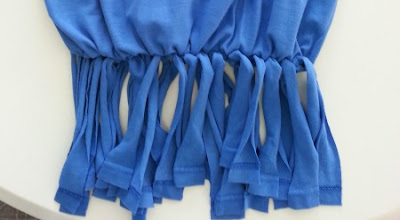Here's a brief description from Fred Nucifora of Reef HQ Aquarium:
"Floating syndrome is caused by a build up of gas in the turtle’s body, which can happen after it has ingested marine debris that blocks its gastrointestinal tract and prevents food being properly digested. The body’s unreleased gas keeps the animal afloat which not only stops it diving for food, but also makes it more vulnerable to predators like sharks or boat traffic in the area."
The options aren't great for turtles that swallow plastic. They get eaten, hit by a boat, or starve to death. That's why she'll have to stay in turtle hospital probably for the rest of her life.
In Angie's case it was a plastic bag someone used for probably a few minutes. It really is obvious that we should reduce our use of disposable plastic and increase the amount that gets recycled.
PS. The episode also showed turtles with a drinking straw lodged up their nostril. In one case it seemed to be the entire length of the straw. Ouch.
Bonus link: More on buoyancy disorders













